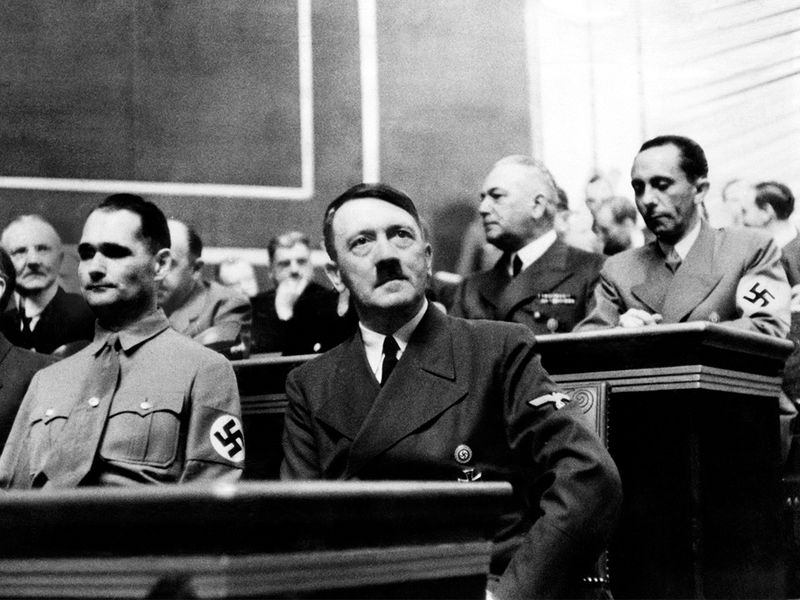Adolf Eichmann was one of the main architects of the Holocaust, who was given the role of organising the deportation of the Jews throughout Eastern Europe to both the ghettos and the extermination camps in World War Two (WWII). Eichmann is one of the most renowned Nazi war criminals, who played a major part in the Holocaust and its resulting extermination of a near 6 million Jewish people.
Through this piece, we will be exploring the life of Adolf Eichmann, investigating the following areas:
- Early life.
- Joining the Nazi party.
- His part to play during the war.
- Capture and trial.
Early Life
Adolf Eichmann was born in the Rhineland (Western Germany) city of Solingen in 1906, and was the son of accountant Adolf Karl and his wife Maria. Adolf Karl was the bookkeeper for a power company within the area, however in 1913 was promoted to a higher position in Austria. Eichmann was one of six children Adolf and Maria Karl had, Eichmann’s mother died in 1916, and his father quickly remarried.
The Nazi war criminal was raised in a devoutly Evangelical environment, his father Adolf Karl a frequent church-goer as was Eichmann for quite some time, until just before the start of WWII. Eichmann kept his faith for significantly longer than most men of the Nazi police force (the SS).
Although very much influenced by the successful authoritative male figure (and father) in his life Adolf Karl, Eichmann did not do very well in school, having failed most of his tests and leaving education without any qualifications at all. Upon leaving school, Eichmann’s father offered him a job working for his oil-extraction company. After doing this for a while, Eichmann then started an apprenticeship up at an electrical engineering company, before moving back into the oil business with the help of nepotism from his father.
After proving his worth through the oil company, Eichmann was then moved to the city of Salzburg in Austria. This was followed by losing his job, however, through his work experience Eichmann learnt the skills necessary for the integral role that he played throughout the Holocaust.
Adolf Eichmann and the Nazi Party
Eichmann came from an incredibly ardent German nationalist background, becoming a part of ‘Wandervogel’ and further its strong ideologies surrounding nationalism and the Heimat. After this, the young Adolf Eichmann then joined the right wing party of Heimschutz – Linz. Eichmann was also known to have had an interest in organisations which shared similar ideologies, and nearly joined a Freemasons club that was renowned for excluding Jewish people.
Eichmann then became an official member of the Nazi party in 1932, and later got a position with the Nazi’s security service SD. It was during his time at the Sicherheitsdnienst where was picked up by Edler von Mildenstein, who managed the Jewish departments of the Nazi’s intelligence service. Von Mildenstein became somewhat of a mentor to Eichmann.
Once picked up by Mildenstein, the head of the SD’s Jewish department then urged Eichmann to study the dynamics of Jewish culture and their history in an attempt to better understand their enemy. Eichmann excelled in this field, and consequently rose up the ranks, and was an integral part of the SD’s plan to emigrate the Jews. Although a part of this plan, Eichmann expressed concerns with emigrating the Jews to a state where they would have power, and instead argued for them to be relocated to poverty-stricken areas.
The Final Solution

During the Final Solution Eichmann was called upon to check on how the plans for murdering Jews in the Polish ghettos was proceeding. During this experience, Eichmann witnessed the various different tactics that were being used to slaughter Jewish people, including gassings and shootings. Little after this, The Final Solution to the Jewish Question was underway at the Wannsee Conference.
Eichmann was given the task of organising the deportation of the Jews to the infamous death camps, a task that the Nazi war criminal is most known for, being a definitive part of his actions throughout the war.
During the month of March in 1944, Eichmann then went to Budapest with a task force, in which the Nazi group rounded up 437,000 Jewish people for deportation in just two months. The majority of these Jewish prisoners were murdered upon first arriving into Auschwitz.
Later Life and Capture

Following the end of WWII, Eichmann managed to escape prosecution by hiding under the pseudonym Otto Eckmann. His identity was discovered whilst working in district of Cham in Germany, and fled again, changing his identity to Otto Heninger this time. During the first several months after being found, Eichmann moved from place to place in the fear of being discovered.
Eichmann’s final relocation before being captured was in Buenos Aires. After this, the Nazi war criminal was taken to a police station in Yagur, Israel. After a lengthy period of holding, and a prosecution case of 56 days, Eichmann was charged, and further sentenced to death for the atrocious role played during the war. The sentence was death by hanging, which was conducted on the 1st of June 1962.








